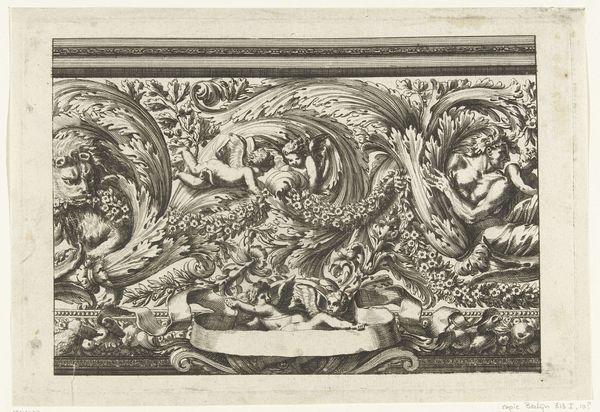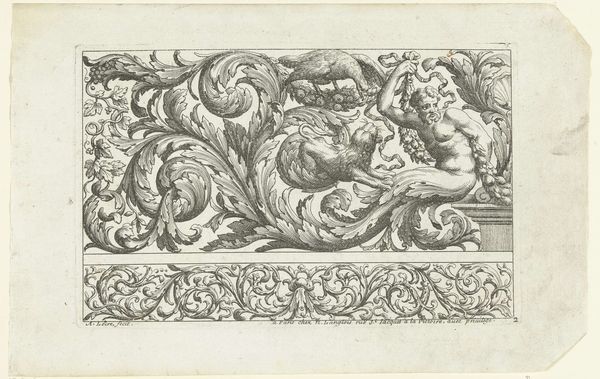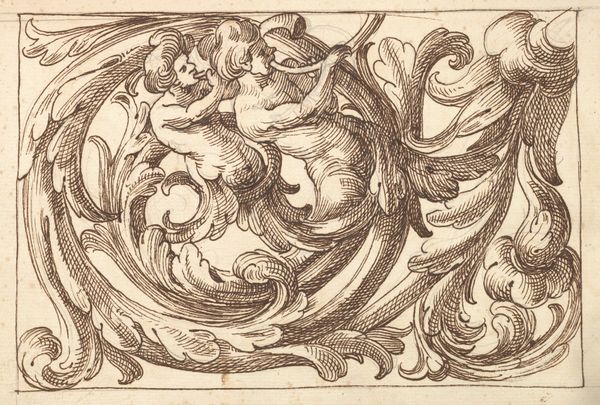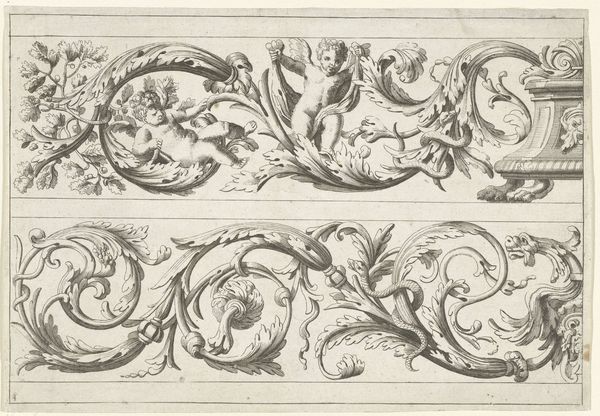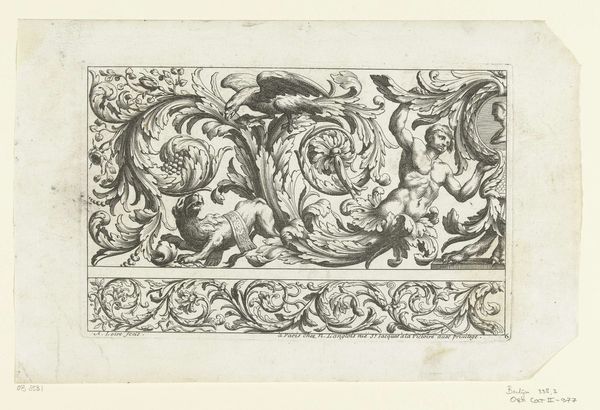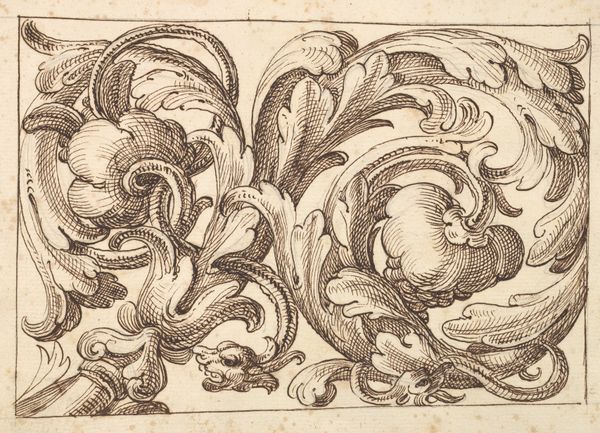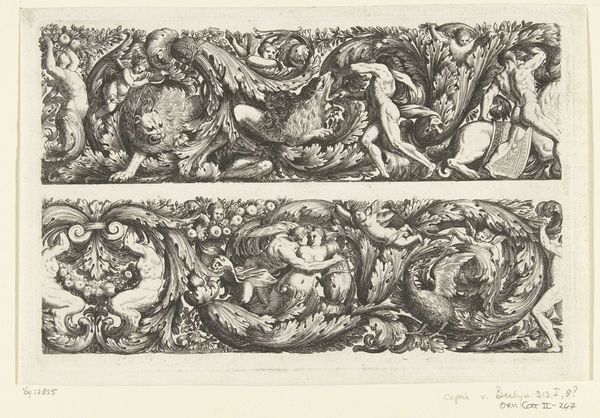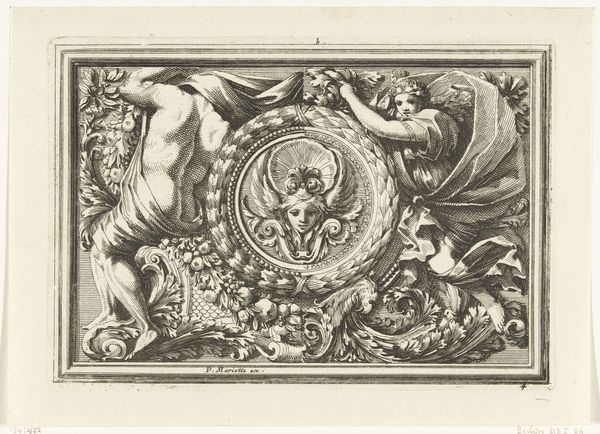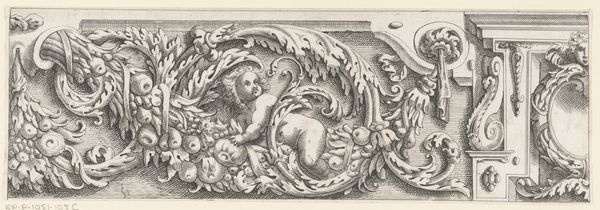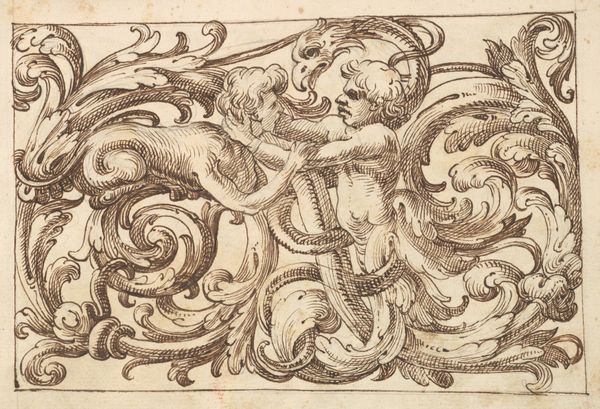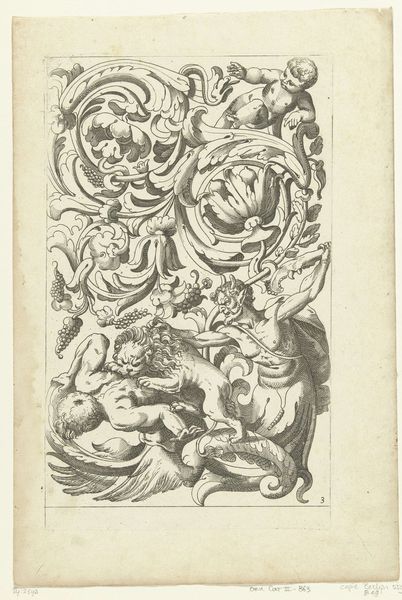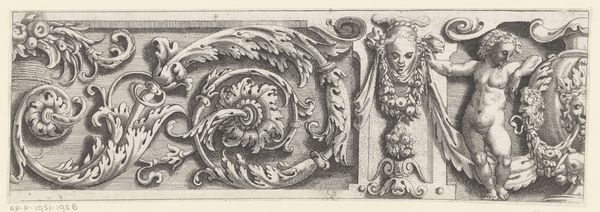
drawing, print, engraving
#
drawing
#
baroque
#
pen drawing
# print
#
pen illustration
#
pen sketch
#
figuration
#
ink line art
#
pen-ink sketch
#
pen work
#
engraving
Dimensions: height 146 mm, width 220 mm
Copyright: Rijks Museum: Open Domain
Curator: Alexis Loir's "Schild, jongeman en twee amoretten tussen bladranken" – a design for a shield depicting a youth and two cupids amidst foliage – offers a fascinating glimpse into Baroque ornament. It's estimated to have been made before 1742, using pen and engraving. Editor: The initial impact is one of overflowing, almost manic abundance. The foliage practically swallows the figures. I'm also immediately struck by the sharp contrasts and almost aggressive textures—definitely no serene classical composure here! Curator: Precisely! Consider the interplay of light and shadow created by the engraving technique. Loir manipulates the cross-hatching to define volume and surface texture. Note how the linear complexity contributes to a dynamic visual experience, embodying Baroque sensibilities. Editor: And what of that abundance? The carving and subsequent printing of such detail reflects the artisan’s labor, certainly. Beyond the mere visual pleasure, it represents the aspirations of those commissioning such works – the display of wealth and status were intrinsically linked to the time and skill poured into crafting such pieces, don't you agree? Curator: Indeed, and let us also consider the iconographic choices: the cherubic figures intertwined with lush foliage. This is more than simple decoration. The cupids, associated with love, and the flourishing leaves, suggestive of growth and prosperity, are combined in symbolic representation. The youth being protected, watched over… Editor: But were these displays purely celebratory? Or were they, in part, asserting dominance in a hierarchical society? A question worth considering when analysing the economic basis that allows these displays of prowess! The material realities of commissioning engraving meant social barriers existed. Curator: A fair point! We must acknowledge that access was dictated by economic status. However, I am also compelled to consider its internal complexities, its compositional balance and imbalance… its strategic application of visual rhetoric to provoke… Editor: I find that even those strategies cannot divorce the image from the complex world from whence it was extracted from, and in the case of a commercially-available print, multiplied across many versions! Curator: Well, looking at it from different viewpoints yields greater knowledge about an artifact that is fascinatingly detailed. Editor: Absolutely! Hopefully visitors feel inspired to dig into not just the what, but also the how and why this particular image came to be.
Comments
No comments
Be the first to comment and join the conversation on the ultimate creative platform.
